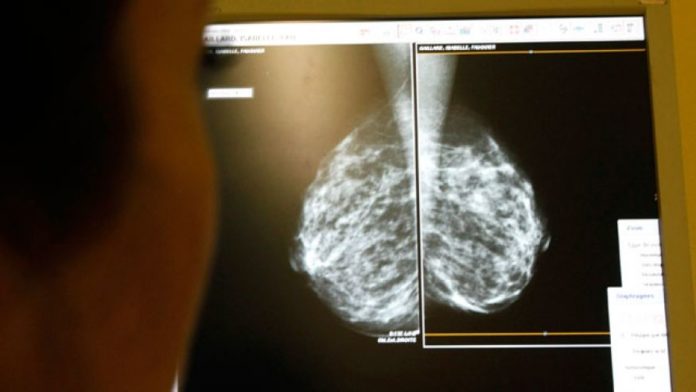
While regular mammography can be useful in early detection of breast cancer, age should be considered when weighing the risks and benefits. The United States Preventive Services Task Force currently recommends women between ages 50 and 74 go in for mammograms every other year, but a new study finds that, for women over 70, screening may do more harm than good.
The Netherlands-based study, published in the British Medical Journal, argues that the use of screening mammograms in women over 70 may actually lead to over-diagnosis and, consequently, over-treatment.
As people in Western societies are living longer, it is expected that in the coming years there will be an increase in the proportion of older women with breast cancer — the largest contributor to death from cancer in women worldwide. Older women with breast cancer are at increased risk for adverse outcomes and side effects from breast cancer treatment, and studies have shown that risk of death from breast cancer increases with age.
Although doctors have assumed that screening programs could diagnose breast cancer at an earlier stage in older women and therefore improve prognosis, no strong evidence exists for the benefits of this. Furthermore, randomized trials investigating the risks and benefits of screening guidelines have rarely included women over the age of 60.
However, in 1998, the upper age limit for national screening guidelines in the Netherlands was extended from 69 to 75, giving researchers the opportunity to study the outcomes of mammography among an older age group.
Twenty ‘extra’ cases of early stage breast cancer for every diagnosis of invasive cancer
To investigate the potential risks and benefits of screening programs for older women, the Dutch team assessed the available evidence for the national breast cancer screening program in the Netherlands.
The team, from Leiden University Medical Center, tracked all new cases — 25,000 in all — of invasive and non-invasive (in situ) breast cancer among women ages 70 to 75 for a period of 15 years starting in 1995.
In addition, 13,000 women ages 76 to 80 were also included in the study as a comparison group, which allowed the researchers to examine any changes in breast cancer incidence among women who were too old to be eligible for the national screening program.
The analysis revealed a sharp rise in the number of cases of early stage breast cancer diagnosed after the age limit for recommended screenings was increased. The incidence of these early stage diagnoses went from around 249 per 100,000 women to nearly 363. In contrast, diagnoses for advanced stage breast cancer fell slightly, from around 59 cases to 52 cases per 100,000 women.
Based on those findings, the team calculated that for every advanced stage breast cancer detected through screening among 70-75-year-olds, around 20 “over-diagnosed” early stage cancers were detected.
Over-diagnosed cases describe early-stage, non-invasive tumors that pose a very low risk of spreading and often do not require treatment. According to the authors, these “extra” cases amount to “a considerable proportion.”
Mammography guidelines — too much of a good thing?
While mammograms are used for early breast cancer detection and to lower mortality, a growing body of evidence suggests that older women do not reap the same benefits as younger women. A study conducted earlier this year recommended that doctors consider a woman’s life expectancy before ordering a breast cancer screening, saying that the benefits of screening only outweigh the risks if the patient can be expected to live for at least another decade.
Another study highlighted that annual screenings are unnecessary, and that going in every other year, as per the United States Preventive Services Task Force’s recommendations, lowers the chance of false positives and biopsies.
Demonstrating the potential harms of over-screening and over-diagnosis, a study published earlier this month found that an increasing percentage of women with early-stage breast cancer in the U.S. are undergoing double mastectomy . However, an analysis of breast cancer outcomes revealed that the procedure was not associated with a lower risk of death than breast-conserving surgery plus radiation.
In older patients, particularly, the concern is that over-diagnosis and over-treatment can undermine quality of life, exposing vulnerable older people to the physical and psychological side effects of breast cancer treatment. Also, the authors warn, for little apparent health benefit, there is “a potentially hefty price tag.”
“Instead of using mass screening, the decision to participate in the screening program should be personalized, based on remaining life expectancy, breast cancer risk, functional status and patients’ preferences,” the Dutch researchers concluded.
The team’s findings are sure to be the topic of considerable debate as the medical community continues to grapple with the question of whether mammograms are really effective. While this debate has existed for years, the finding that has sparked the most debate recently was a 2012 study, published in the New England Journal of Medicine, which found that while mammography led to more treatment earlier, it didn’t necessarily save lives:
“Despite substantial increases in the number of cases of early-stage breast cancer detected, screening mammography has only marginally reduced the rate at which women present with advanced cancer. Although it is not certain which women have been affected, the imbalance suggests that there is substantial overdiagnosis, accounting for nearly a third of all newly diagnosed breast cancers, and that screening is having, at best, only a small effect on the rate of death from breast cancer.”
